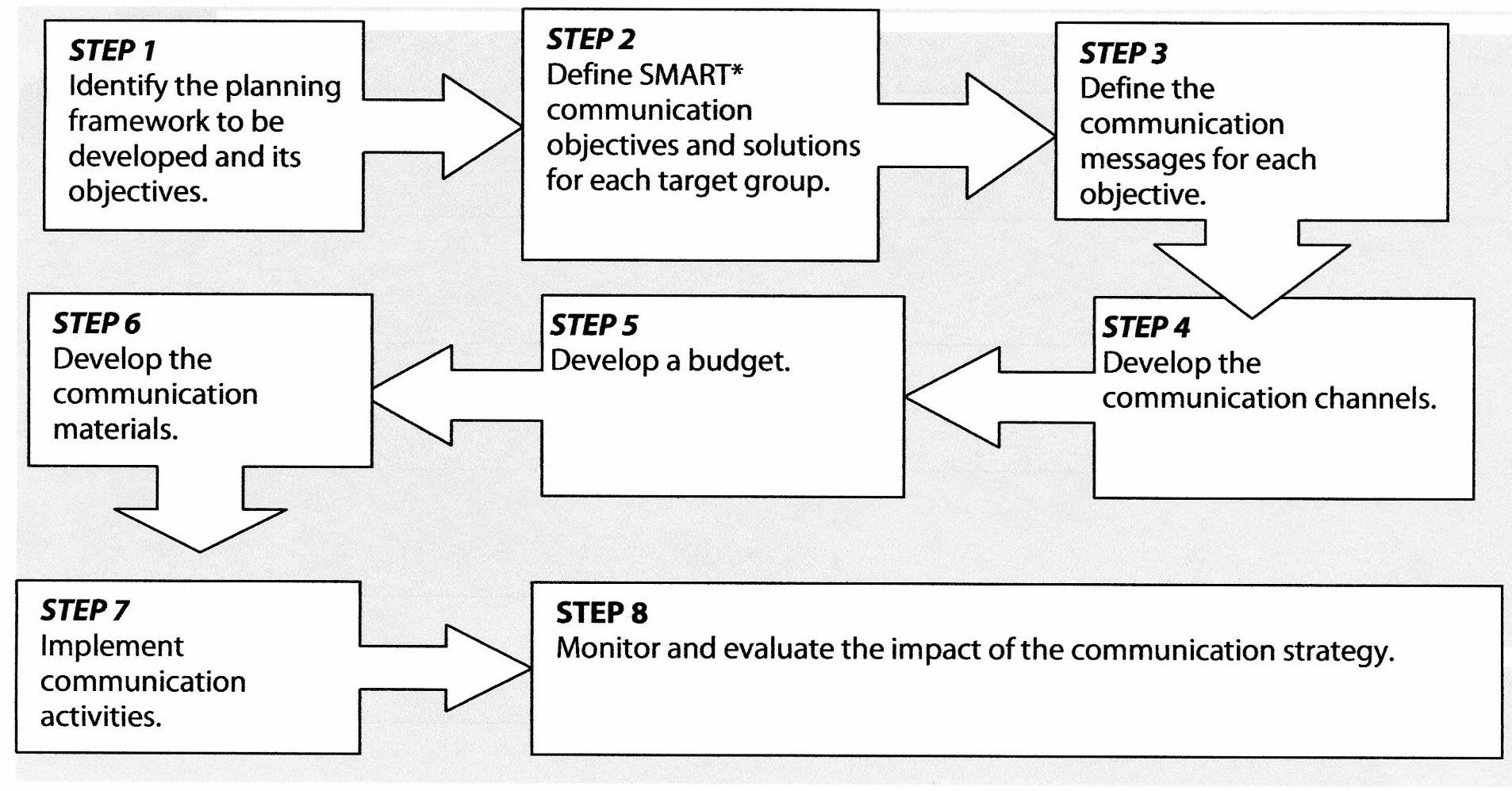|
ADVOCATING, ENGAGING AND COMMUNICATING EM
[Chapter to be developed]
Successful environmental mainstreaming requires that all key stakeholders (including citizens and marginal groups) have sufficient knowledge about environment and sustainable development issues, and are informed about the policy, strategy, plan, initiative or decision concerned. Communication can be inhibited by a range of factors including the language and medium by which information is provided (especially in countries with a diversity of language speakers), the freedom of the media, and the state of communications infrastructure. It is critical, therefore, to develop a well-planned strategy for communication (that includes advocacy as a key element) that can reach across and permeate all processes iteratively and particularly target key stakeholders. A model for such a strategy is suggested by UNDP (2008).
Figure 19.1: Steps for a mainstreaming communications strategy

* Specific, measurable, accurate, realistic and timely
(Source: UNDP 2008)
Those involved in environmental mainstreaming need to sell their proposition to different target groups, in ways that create incentives for non-environment groups to respond positively. This means both avoiding language that is too environment-specific and developing positive arguments that relate primarily to those groups’ own goals and aspirations (as well as some that relate to key fears). Examples of how to pitch the overall intention of environmental mainstreaming include, for example (Bass, 2008):
- ‘developing a green, low-carbon economy’
- ‘making poverty reduction irreversible’
- ‘improving country resilience’
- ‘securing the environmental foundations for development’
- ‘reversing the downward spiral of environment and poverty’
- ‘policies for better environmental governance’
- ‘improving cross-sector environmental benefits and reducing costs’
- ‘integrating poor people’s environmental needs’
- the focus being on integration – a hybrid outcome, and not a one-way environment-into-development outcome.
|